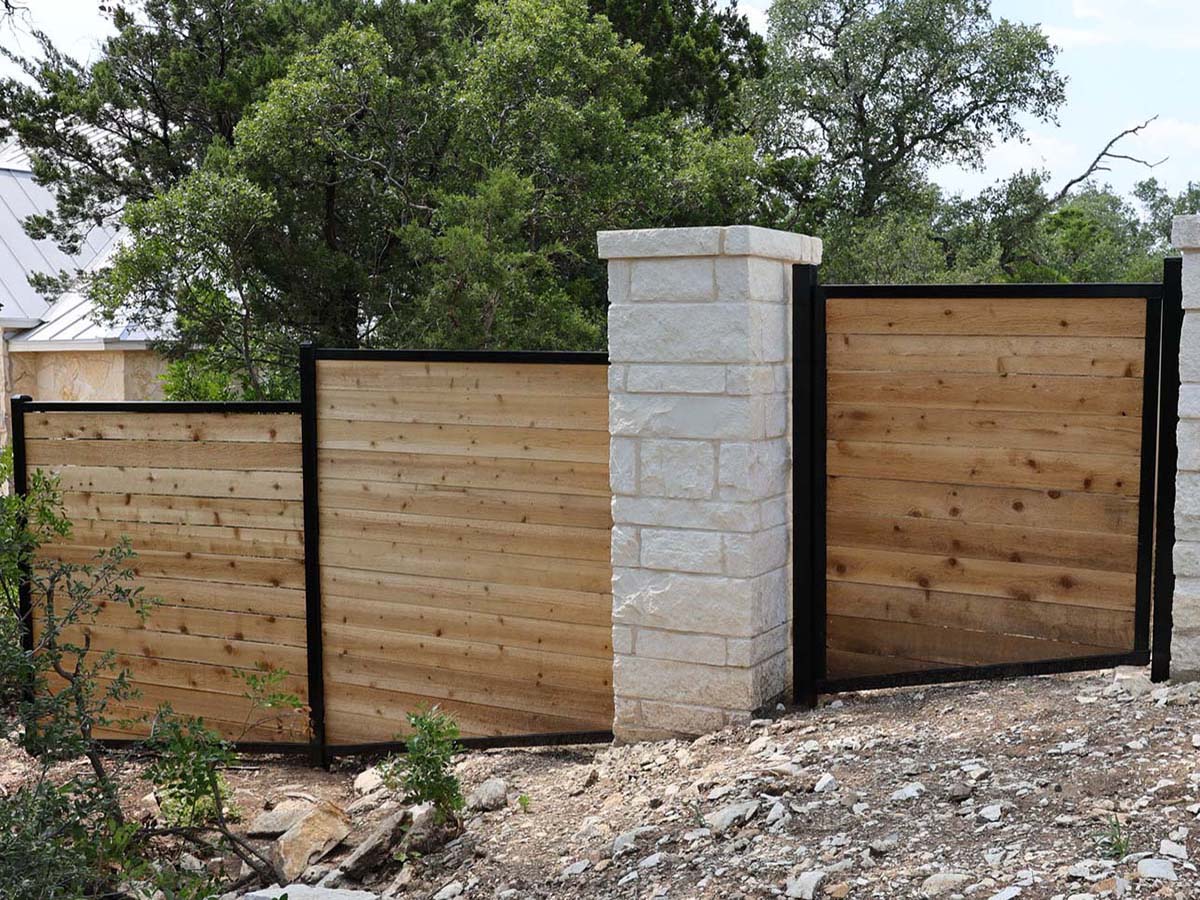All Categories
Featured
Setting up a fence around your residential or commercial property can boost privacy, safety, and looks. Before getting started, it's crucial to establish whether you require a license for the setup. Various areas have differing laws, and understanding what's required will help make certain that your fence is legal, risk-free, and constructed according to neighborhood standards. Below's a guide to assist you browse the allowing procedure for fencing setup.
Why Are Allows Needed? Permits are required to guarantee that the setup of your fencing satisfies regional building ordinance and zoning legislations. These policies remain in place to maintain the safety and security, appearance, and capability of homes in your area. Furthermore, permits help avoid disputes with next-door neighbors relating to residential or commercial property lines, fencing elevation, and other architectural details.
Regional authorities need permits to keep track of things like visibility at junctions, public safety, and possible damage to energies like water pipes or electric lines. The procedure helps keep your fencing task compliant with security and lawful standards.
Kinds Of Licenses You Might Need. The specific licenses needed can differ depending on your location and the specifics of your task. Below are one of the most typical sorts of permits you may require:
Building Authorization. Many cities and areas require a structure authorization for fencings that exceed a specific height, generally over 6 feet. This license makes certain that your fencing follows architectural standards, specifically if it's made from specific products such as concrete, metal, or brick. Structure authorizations are also needed when your fence influences the general landscape, like developing a sound barrier or obstructing a sightline.
Zoning License. Zoning licenses are provided to make certain that your fence adheres to local zoning legislations. These regulations may manage where fences can be put on your building (e.g., backyard, front, or side), how high they can be, and whether they can be set up near sidewalks or streets. Zoning legislations are established to maintain the total appearances of areas and preserve web traffic security.
Obstacle Authorization. Some locations have problem laws that identify how much a fence should be from the residential property line, road, or certain public areas. Trouble licenses are made to ensure that your fence doesn't hinder neighboring properties or public locations. A building survey might be required to validate property lines prior to obtaining this kind of license.
HOA Authorization. If you stay in a neighborhood governed by a Homeowners Association (HOA), you may require to obtain authorization from the HOA before mounting a fencing. HOAs often have strict guidelines about the kind of fence allowed the community, including its product, color, and height. Constantly contact the HOA before beginning your task to prevent any kind of conflicts.
Just How to Obtain a Fencing Permit. The procedure for obtaining an authorization commonly includes a number of actions:
Research Resident Rules. Start by checking your city or county's site to locate out the specific needs for fencing setup. You might need to see the regional planning or building department face to face for more comprehensive information.
Prepare Your Application. Many cities will call for an application kind, which consists of details about your prepared fence, such as:
![]()
The sort of fencing material (wood, plastic, chain-link, etc) The prepared height of the fence. The location and measurements of the fence. A building study (to verify property lines) Send the Application. After finishing the application, send it to the local building or zoning office. You might be required to pay a cost depending upon your area and the dimension of your fencing. Fees can differ, however they typically cover the expense of processing your demand and reviewing your plans.
Await Authorization. When your application is sent, the local authorities will assess your strategies to ensure they meet zoning and constructing requirements. This procedure can take anywhere from a couple of days to a number of weeks, relying on the complexity of the job and the volume of permit demands in your location.
![]()
Assessment (If Required) Sometimes, you may require to arrange an examination after the fencing is set up to ensure it fulfills the needed standards. Your regional office will allow you know if this step is necessary.
When You Do Not Required a Permit,. Not every fence installation requires an authorization. Some situations where you might not require a permit consist of:
Mounting a fencing that's under a particular height (often 3-4 feet for front yards) Changing an existing fencing with one that coincides height and material. Installing a short-lived fencing (e.g., for construction or gardening) Nevertheless, even if your task appears small, it's always advisable to talk to neighborhood authorities to make sure you're following the right procedure.
Repercussions of Not Obtaining a Permit. Setting up a fence without the essential permit can cause considerable consequences, consisting of fines, elimination of the fencing, and expensive reinstallation. Sometimes, local authorities may need you to modify the fencing if it doesn't satisfy code needs. Furthermore, not acquiring a license could produce disagreements with neighbors, specifically if the fence is placed incorrectly or violates regional elevation policies.
Final thought. Before mounting a fence, it is necessary to research the certain allowing needs in your area. If an authorization is needed and to guarantee that you're complying with the correct treatment, contact your regional structure or zoning division to locate out. By protecting the appropriate authorizations, you'll avoid lawful concerns and make certain that your fence installment is secure, certified, and convenient.
Why Are Allows Needed? Permits are required to guarantee that the setup of your fencing satisfies regional building ordinance and zoning legislations. These policies remain in place to maintain the safety and security, appearance, and capability of homes in your area. Furthermore, permits help avoid disputes with next-door neighbors relating to residential or commercial property lines, fencing elevation, and other architectural details.
Regional authorities need permits to keep track of things like visibility at junctions, public safety, and possible damage to energies like water pipes or electric lines. The procedure helps keep your fencing task compliant with security and lawful standards.
Kinds Of Licenses You Might Need. The specific licenses needed can differ depending on your location and the specifics of your task. Below are one of the most typical sorts of permits you may require:
Building Authorization. Many cities and areas require a structure authorization for fencings that exceed a specific height, generally over 6 feet. This license makes certain that your fencing follows architectural standards, specifically if it's made from specific products such as concrete, metal, or brick. Structure authorizations are also needed when your fence influences the general landscape, like developing a sound barrier or obstructing a sightline.
Zoning License. Zoning licenses are provided to make certain that your fence adheres to local zoning legislations. These regulations may manage where fences can be put on your building (e.g., backyard, front, or side), how high they can be, and whether they can be set up near sidewalks or streets. Zoning legislations are established to maintain the total appearances of areas and preserve web traffic security.
Obstacle Authorization. Some locations have problem laws that identify how much a fence should be from the residential property line, road, or certain public areas. Trouble licenses are made to ensure that your fence doesn't hinder neighboring properties or public locations. A building survey might be required to validate property lines prior to obtaining this kind of license.
HOA Authorization. If you stay in a neighborhood governed by a Homeowners Association (HOA), you may require to obtain authorization from the HOA before mounting a fencing. HOAs often have strict guidelines about the kind of fence allowed the community, including its product, color, and height. Constantly contact the HOA before beginning your task to prevent any kind of conflicts.
Just How to Obtain a Fencing Permit. The procedure for obtaining an authorization commonly includes a number of actions:
Research Resident Rules. Start by checking your city or county's site to locate out the specific needs for fencing setup. You might need to see the regional planning or building department face to face for more comprehensive information.
Prepare Your Application. Many cities will call for an application kind, which consists of details about your prepared fence, such as:

The sort of fencing material (wood, plastic, chain-link, etc) The prepared height of the fence. The location and measurements of the fence. A building study (to verify property lines) Send the Application. After finishing the application, send it to the local building or zoning office. You might be required to pay a cost depending upon your area and the dimension of your fencing. Fees can differ, however they typically cover the expense of processing your demand and reviewing your plans.
Await Authorization. When your application is sent, the local authorities will assess your strategies to ensure they meet zoning and constructing requirements. This procedure can take anywhere from a couple of days to a number of weeks, relying on the complexity of the job and the volume of permit demands in your location.

Assessment (If Required) Sometimes, you may require to arrange an examination after the fencing is set up to ensure it fulfills the needed standards. Your regional office will allow you know if this step is necessary.
When You Do Not Required a Permit,. Not every fence installation requires an authorization. Some situations where you might not require a permit consist of:
Mounting a fencing that's under a particular height (often 3-4 feet for front yards) Changing an existing fencing with one that coincides height and material. Installing a short-lived fencing (e.g., for construction or gardening) Nevertheless, even if your task appears small, it's always advisable to talk to neighborhood authorities to make sure you're following the right procedure.
Repercussions of Not Obtaining a Permit. Setting up a fence without the essential permit can cause considerable consequences, consisting of fines, elimination of the fencing, and expensive reinstallation. Sometimes, local authorities may need you to modify the fencing if it doesn't satisfy code needs. Furthermore, not acquiring a license could produce disagreements with neighbors, specifically if the fence is placed incorrectly or violates regional elevation policies.
Final thought. Before mounting a fence, it is necessary to research the certain allowing needs in your area. If an authorization is needed and to guarantee that you're complying with the correct treatment, contact your regional structure or zoning division to locate out. By protecting the appropriate authorizations, you'll avoid lawful concerns and make certain that your fence installment is secure, certified, and convenient.
Latest Posts
How Bill Berardino is Transforming Content Marketing
Published Feb 24, 25
1 min read
Land Wanderer's Impact on the SUV Market
Published Feb 24, 25
4 min read
Which Vehicle Trends Will Control the Following Years?
Published Feb 24, 25
4 min read